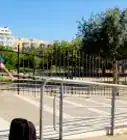This article was co-authored by wikiHow Staff. Our trained team of editors and researchers validate articles for accuracy and comprehensiveness. wikiHow's Content Management Team carefully monitors the work from our editorial staff to ensure that each article is backed by trusted research and meets our high quality standards.
There are 7 references cited in this article, which can be found at the bottom of the page.
This article has been viewed 31,930 times.
Learn more...
Parkour is a non-competitive sport where practitioners seek to move through various novel environments as quickly and efficiently as possible. Runners carefully plan out routes on the fly, using their environment to overcome obstacles in their way. Because of this, male and female parkour practitioners are named traceurs and traceuses[1] for the French words for "one who traces."[2] Although the popular image of parkour is of traceurs who jump from roof tops to roof tops, the art can be practiced anywhere and typically involves much less extreme conditions. While you may not always have the opportunity to work through a complex parkour course, there are many ways you can practice necessary skills between runs.
Steps
Knowing the Basic Techniques
-
1Vault at full speed. While doing parkour, you will often need to bypass medium-sized obstacles without slowing your run. To do this, you will likely perform a speed vault:
- As you approach the obstacle, kick off from the ground using your left leg while raising your right.
- Simultaneously reach your left arm forward and place one hand flat on the object. Avoid contacting the obstacle before your body is airborne.
- As your hand catches the obstacle, use the momentum from your kickoff to bring both legs together up towards your right side.
- Use your left arm as a pivot to direct your body's momentum over the obstacle.
- Once you're over the object, land on your left foot to regain vertical posture. Return to your run.
-
2Leap like a cat. In a "cat leap," the traceur jumps onto the face of a wall and uses all four limbs for grip and balance. While in the air, position your arms in front of you so that your hands can grip the wall ledge when landing. Orient your legs to be nearly parallel with your arms and so that your feet will connect with the wall's face first. Allow your legs to absorb the impact, bend at the knee, and catch the ledge with your hands.
- A cat leap can be done using almost any type of leap as a base, from running jumps to vaults. As long as you can orient your body so that all four of your limbs can extend forward, you can turn a normal leap into a cat leap.
- In practice, this move is typically used to reach slightly higher surfaces. From this position, the traceur often pulls his or her body up onto the top of the wall.[3]
Advertisement -
3Swing through the air. Find a horizontal bar you'd like to swing from and jump towards it. Before catching the bar with your hands, curl your body and bring your legs up and forward. Once your hands make contact with the bar, add to the momentum and direct your body forward.[4]
- When you are doing parkour, be careful that any bars you grab onto are sturdy enough to hold your weight.
-
4Land solidly. Any time you land, you will need to do so safely. In general, you will be landing upright on two feet. This could easily cause injuries to your knees and wear out your joints over time if not done properly. Keep the following in mind when landing:
- Land on the balls of your feet. This is the semi-flat space between the toes and the arch. When you land, angle your feet pointing downward while lifting your toes.
- Don't land with your legs straight. Bend your knees to absorb the shock of your landing.
- Never bend your knees to an angle less than 90 degrees.
-
5Roll to absorb landing impact safely. Rolls can be done at the end of a controlled drop or after an unexpected fall. Their purpose is to spread out the force of impact, preventing injury. With practice, a quick roll can even be done painlessly on concrete. Until then, it's best to practice on soft surfaces, such as grass and gym mats. To execute a roll diagonally across your back:
- When practicing, begin in a standing position with one leg slightly forward. The leg in front should correspond to the same side as the shoulder you plan on rolling onto.
- Crouch down into a squat, placing your hands on the ground palms down. The hand of the side you're rolling into should be slightly behind the other, making a diagonal line with your front foot. The opposite hand should form a straight line with your back foot.
- Push with your front leg to create momentum. Roll onto the corresponding arm and then drop onto your shoulder.
- When your shoulder hits the ground, tuck your back leg into your side. Shift your weight and use your momentum to roll from your shoulder to your hip on the opposite side.
- Hit the ground with your front foot first as you finish your roll.
- It's extremely important to keep your head up and away from the ground at all times.[5]
Training Your Body
-
1Go for daily runs. Running is a major component of parkour, so your training should include this element. The time and frequency you should devote to running will depend on your personal preference and skill level. Most casual runners run only three times a week to prevent injury, while many serious runners do so twice per day.
- If you don't already run as part of your exercise regimen, start out slow with short runs every other day. As your endurance increases, you can then gradually add miles to your weekly run goal.
-
2Build functional strength. When you parkour, you will need the strength to do things like jump, climb, and vault your way past obstacles. As such, you will need to develop muscles in your legs, arms, and core. Squats, push-ups, pull-ups, and lunges are excellent exercises for this type of strength training that don't require specialized equipment to do.
- Remember that the amount of force you'll need to generate is proportional to the weight of your body and that muscle is fairly heavy. Because of this, traceurs tend to be lean rather than bulky.
-
3Practice quadrupedal movement. Learn to crawl quickly on your hands and feet. When doing parkour, you will use quadrupedal movement to crawl under objects and fit into tight spaces with swiftness and ease. Practicing quadrupedal movement is also an excellent workout in and of itself, as it exercises all four of your limbs along with your core.
-
4Get your feet used to minimalist shoes. Because parkour relies heavily on tactile feedback and freedom of movement, most traceurs avoid bulky running shoes. You should look for a shoe that has thin soles while providing excellent grip and arch support. If you are not already used to this type of shoe, you will need to take the time to adjust to wearing them. Before doing parkour in them, go for a normal run fist. It's also wise to wear them around the house and for low-impact walks before doing any type of running at all.[6]
-
5Learn to love calluses. While you may see some traceurs wearing gloves to protect their hands, they are not generally recommended. Gloves reduce feedback between your hands and your environment, increasing the likelihood of dangerous mistakes. Instead, practice without covering your hands and encourage the formation of calluses.
Overcoming Obstacles
-
1Plan parkour routes when you aren't running. You can do this when you're walking around your city or taking the bus to work. Look around you. Take note of nearby structures and think about how you would interact with them to get from an imaginary point A to point B.
- If there is a large horizontal bar in your path, does it make more sense to vault over it or slide under? Which would be faster for you?
- Where do you see potential footholds on the sides of buildings?
- If there is a gap between ledges, could you make the jump, or should you climb down one and climb up the other?
-
2Join a parkour group. Use Internet resources to locate parkour groups in your area. With local contacts, you'll be able to find the best places to practice and do parkour. If you are a beginner to the sport, you will also be able to find qualified parkour coaches to teach you.
-
3Find the right spot to practice. Parkour has its roots in military training obstacle courses. If you have access to a military-style obstacle course, take advantage of it and practice your parkour skills. If you don't, there are still a few options for you to practice:
- Find other types of obstacle courses in your area. With parkour's increase in popularity, more and more facilities specializing in obstacle course training are opening up.
- Join a gym with gymnastics equipment. You can practice your parkour moves on bars, ropes, vaults, and balance beams all with the safety of soft mats underneath. Keep in mind you may need to reserve space for use. Some gyms also feature rock walls for you to safely practice climbing.
- Public parks are also great places to practice parkour. They usually feature wide open spaces for you to run on and low to the ground structures like tables and railings for you to use as obstacles.
-
4Try new locations whenever you can. Once you get comfortable in your abilities, try moving through new areas. Remember that parkour is meant to be done in almost any environment. If you're bored with your current practice spot, look around for a new one. Ask members of your local parkour community where they like to practice or do parkour.
- Be careful not to practice on private property without permission from its owner.
Community Q&A
-
QuestionWhere's the best place to practice?
 Community AnswerIt is completely up to you. Try finding a picnic table and try some vaults or find a wall to practice wall runs, just try and get creative.
Community AnswerIt is completely up to you. Try finding a picnic table and try some vaults or find a wall to practice wall runs, just try and get creative. -
QuestionAre riding gloves okay for a beginner?
 Community AnswerYes, as long as they have good grip, but it is also important to work on your grip on your actual hands.
Community AnswerYes, as long as they have good grip, but it is also important to work on your grip on your actual hands. -
QuestionIs it really important not to wear gloves when practicing parkour?
 Community AnswerYeah,you will get cuts and wounds, but not wearing gloves will help your hand adapt in the environment. For example; I swung on a pull up bar but I didn't notice molds on top of it. If I wore gloves, I would've slipped.
Community AnswerYeah,you will get cuts and wounds, but not wearing gloves will help your hand adapt in the environment. For example; I swung on a pull up bar but I didn't notice molds on top of it. If I wore gloves, I would've slipped.
References
- ↑ http://americanparkour.com/news/2354/
- ↑ http://dictionary.reference.com/browse/traceur
- ↑ http://news.discovery.com/adventure/extreme-sports/parkour-for-beginners-5-moves-you-can-master-quickly.htm
- ↑ http://news.discovery.com/adventure/extreme-sports/parkour-for-beginners-5-moves-you-can-master-quickly.htm
- ↑ http://breakingmuscle.com/parkour/how-do-you-roll-gymnastics-vs-parkour
- ↑ http://www.theguardian.com/lifeandstyle/the-running-blog/2013/apr/02/barefoot-running-shoes-reviewed
- ↑ http://www.sciencedirect.com/science/article/pii/S1008127515000346
- ↑ http://www.stuff.co.nz/national/10282635/Parkour-kings-of-the-urban-jungle
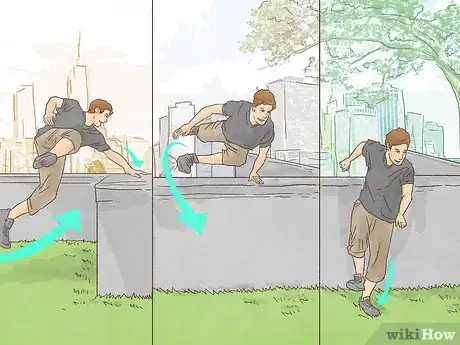
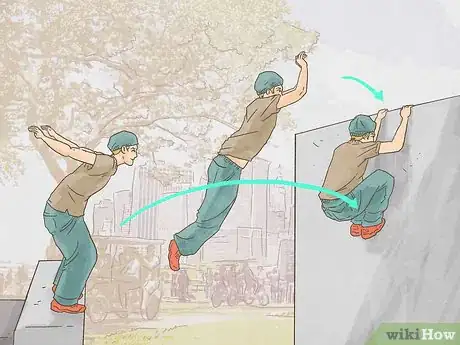
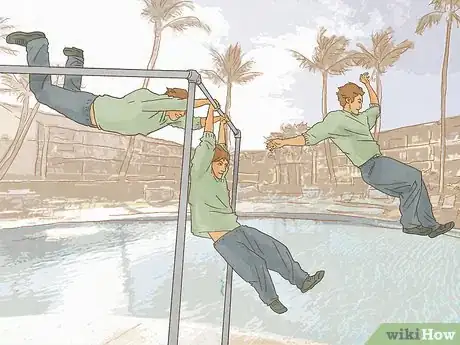
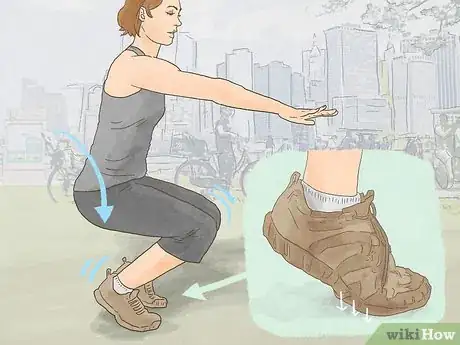

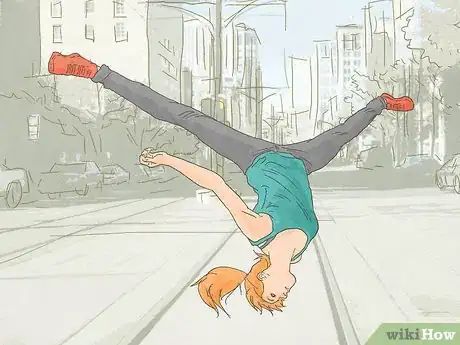
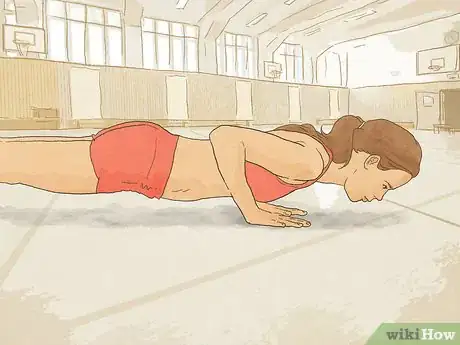
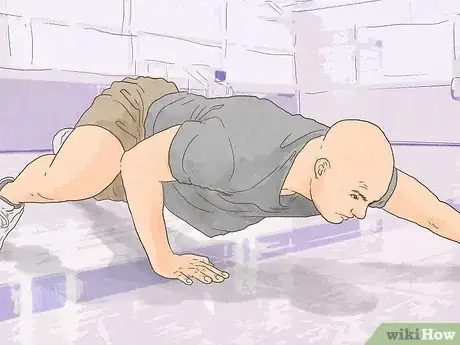
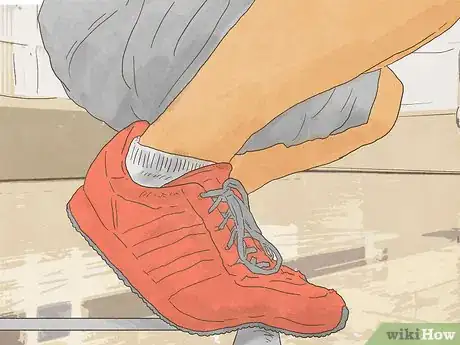
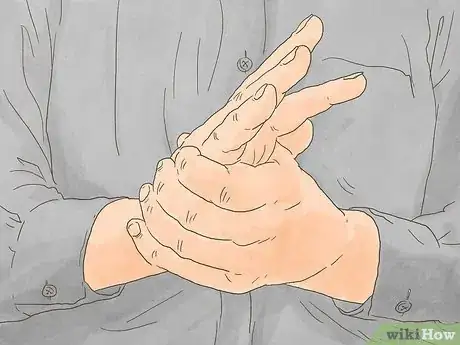
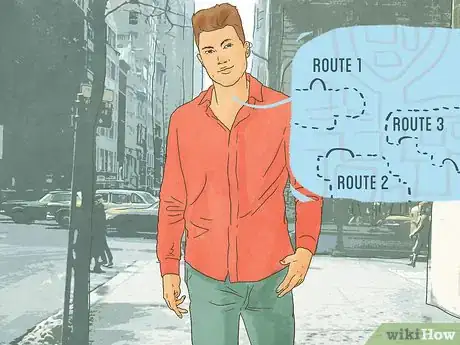

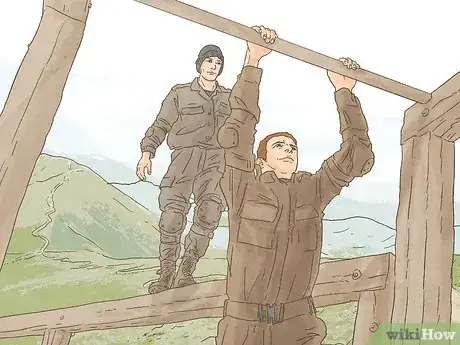
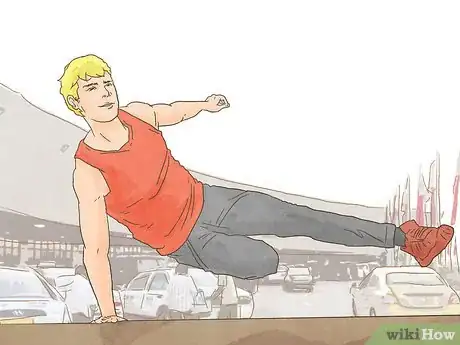
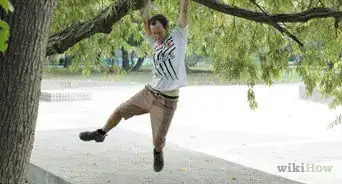



















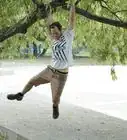
-Step-8-Version-2.webp)
